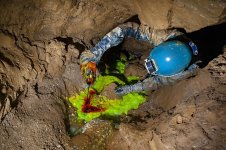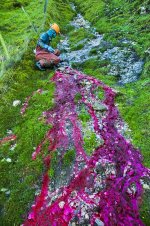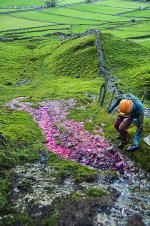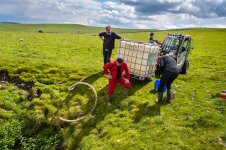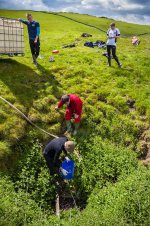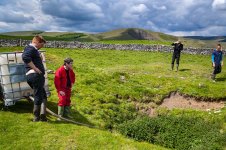pwhole
Well-known member
Unless there's another streamway 300m north of all that stuff. Stemple Sump in the Halfway House series also varied in depth by many metres when observed in the early 90s, and all of that series (and ours) is in a straight line with Winnats Head - not saying it's a definite, but it's a possibility, given the speed of the dye-traces we did in Longcliffe and Son of Longcliffe (and on the hillside) in wet weather. If the Rowter Hole trace went to Main Rising, but quicker to Russet Well, it's not impossible that it and Winnats Head are feeding into a separate stream system further north, going under Longcliffe Mine, roughly parallel to the shale boundary.
Water from Blue John Cavern was tested to the resurgences, and unless that literally goes under the shale floor in the valley, it's possible it could also join this mythical streamway
Water from Blue John Cavern was tested to the resurgences, and unless that literally goes under the shale floor in the valley, it's possible it could also join this mythical streamway



